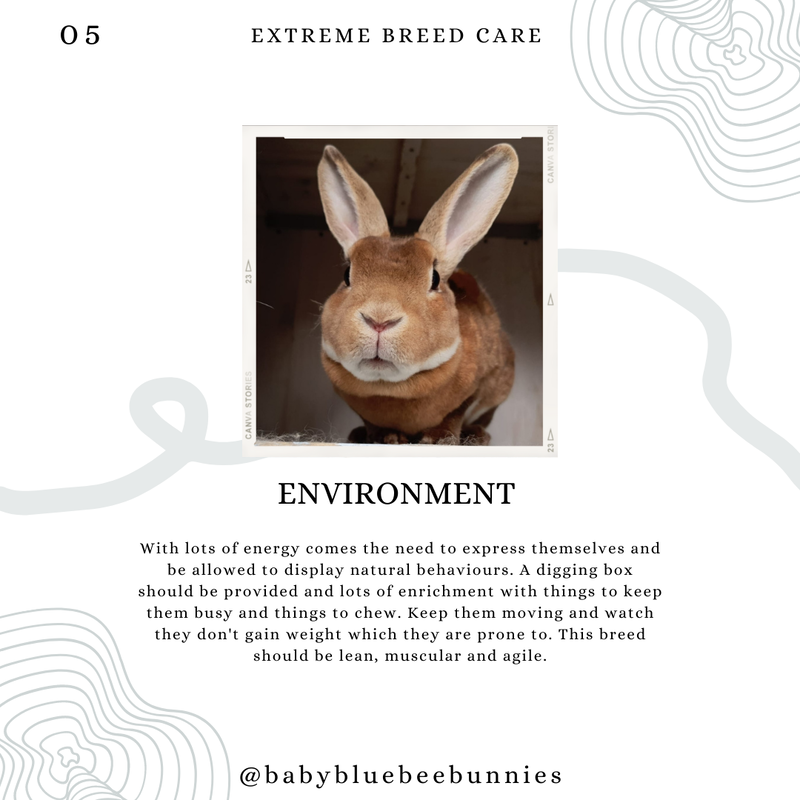Mini Rex
Mini Rexes originated in America in the 1980's when dwarf rexes were bred together to achieve the smaller variety, weighing in only at around 1.5 - 1.9kg. Since then, they have gained popularity and now overtake the Standard Rex in numbers.
Mini Rexes have no guard hairs, giving them the 'velvet' plush coat made of short compact undercoat. They are known for their sparse curly whiskers and little Kangaroo legs. Clever, alert and active, these little chancers are always on the go and enjoy being 'creative'.
With this little ball of energy comes a lot of care. What are their care needs?
Eyes - Having little or no whiskers and eyelashes means less protection from dust falling into the eyes. Hay should be dust free and non dusty litter should be used. Wipe away any rheum from their eyes with a cotton pad.
Feet - The feet have sparse fur so there should be soft areas for them to sit comfortably on and lift their heels such as vetbed and straw beds to alleviate the pressure on the hocks. The hocks should be checked weekly for signs of Pododermatitis and infection. The nails should also be kept very short to prevent hock sores. Soft litter should be used in their litter trays such as Fitch/Carefresh and a layer of soft hay on top.
Coat - With the rex, the coat does not have guard hairs and is ultra dense and plush in texture. The coat does cast and requires brushing with a soft bristle brush or rubber nodule grooming tool. Careful consideration should be taken when bonding them that they do not get skin tears when their fur is pulled.
Environment - With lots of energy comes the need to express themselves and be allowed to display natural behaviours. A digging box should be provided and lots of enrichment with things to keep them busy and things to chew. Keep them moving and watch they don't gain weight which they are prone to. This breed should be lean, muscular and agile.
Mini Rexes have no guard hairs, giving them the 'velvet' plush coat made of short compact undercoat. They are known for their sparse curly whiskers and little Kangaroo legs. Clever, alert and active, these little chancers are always on the go and enjoy being 'creative'.
With this little ball of energy comes a lot of care. What are their care needs?
Eyes - Having little or no whiskers and eyelashes means less protection from dust falling into the eyes. Hay should be dust free and non dusty litter should be used. Wipe away any rheum from their eyes with a cotton pad.
Feet - The feet have sparse fur so there should be soft areas for them to sit comfortably on and lift their heels such as vetbed and straw beds to alleviate the pressure on the hocks. The hocks should be checked weekly for signs of Pododermatitis and infection. The nails should also be kept very short to prevent hock sores. Soft litter should be used in their litter trays such as Fitch/Carefresh and a layer of soft hay on top.
Coat - With the rex, the coat does not have guard hairs and is ultra dense and plush in texture. The coat does cast and requires brushing with a soft bristle brush or rubber nodule grooming tool. Careful consideration should be taken when bonding them that they do not get skin tears when their fur is pulled.
Environment - With lots of energy comes the need to express themselves and be allowed to display natural behaviours. A digging box should be provided and lots of enrichment with things to keep them busy and things to chew. Keep them moving and watch they don't gain weight which they are prone to. This breed should be lean, muscular and agile.





